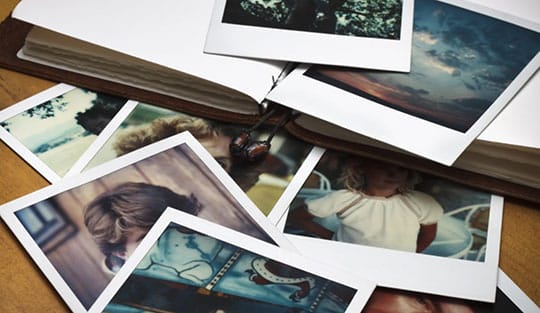Visual elements in a blog post catch the eye and hold it; they are excellent for fostering intriguing and promoting interaction between blog content and a wider audience of viewers. These visuals should do more work, though, than serve as aesthetically pleasing intervals in a post. They offer up an opportunity not only to make content more engaging but to improve its readability and accessibility. In order to best utilize visual content on the dazzling, distracting Internet, consider the following ways visual content can boost your blog:
1) Memorability
 The visuals that appear amongst written content shouldn’t be frivolously used. Nor should you rely on stock images in order to add interest to the screen. Visual content needs to be memorable, be that through its originality or its creative use. These visuals should also serve to share additional information with the content viewer and thus be specifically relevant to the content being presented. There are plenty of sources available to help with original content creation – Canva and Placeit for static images, CloudApp for .gif, and so on. Even applications as simple as Microsoft Excel can help with the creation of an engaging graph meant to draw a reader’s eye and share key information about the subject at hand. What matters is a visual’s relevance and the manner in which it distinguishes itself among the text.
The visuals that appear amongst written content shouldn’t be frivolously used. Nor should you rely on stock images in order to add interest to the screen. Visual content needs to be memorable, be that through its originality or its creative use. These visuals should also serve to share additional information with the content viewer and thus be specifically relevant to the content being presented. There are plenty of sources available to help with original content creation – Canva and Placeit for static images, CloudApp for .gif, and so on. Even applications as simple as Microsoft Excel can help with the creation of an engaging graph meant to draw a reader’s eye and share key information about the subject at hand. What matters is a visual’s relevance and the manner in which it distinguishes itself among the text.

2) Variety
 This memorability is aided by the sheer variety of visual content that exists today. When developing visual content alongside the textual, keep this in mind: intersperse .gif with static images, or precede the whole of the textual content with a subtitled video on the same topic. This variety will keep readers engaged while also exposing them to the shared content through a variety of mediums, making the message of said content all the more memorable. It is important to hold to a balanced theme when using a variety of visual content, though – consider Buzzfeed listicles, for example. These listicles use .gif as reactions to the content that they share, whereas graphs or static images are used to display news, statistics, and so on. Each image is paired with an appropriate context, making it all the more useful in engaging the listicle’s audience.
This memorability is aided by the sheer variety of visual content that exists today. When developing visual content alongside the textual, keep this in mind: intersperse .gif with static images, or precede the whole of the textual content with a subtitled video on the same topic. This variety will keep readers engaged while also exposing them to the shared content through a variety of mediums, making the message of said content all the more memorable. It is important to hold to a balanced theme when using a variety of visual content, though – consider Buzzfeed listicles, for example. These listicles use .gif as reactions to the content that they share, whereas graphs or static images are used to display news, statistics, and so on. Each image is paired with an appropriate context, making it all the more useful in engaging the listicle’s audience.
3) Improved Attention Holders
 Most images are able to guide the eye around a screen; it’s a matter of utilizing that visual content to introduce readership to a post’s flow. For example, .gif, as moving images, are ideal for drawing readers’ attention, so long as they are appropriately timed (it may be best to avoid minute long .gif when embedding visual content into a post). Pairing a .gif with a text block frames the content for a reader and offers them some levity and relatability, which, in turn, allows the content of the text to stick better in their minds. Cleverly arranged static images can present data as it is being discussed, and a preliminary video can not only serve as a summary of the information being shared but a primer that will leave readers wanting to learn more.
Most images are able to guide the eye around a screen; it’s a matter of utilizing that visual content to introduce readership to a post’s flow. For example, .gif, as moving images, are ideal for drawing readers’ attention, so long as they are appropriately timed (it may be best to avoid minute long .gif when embedding visual content into a post). Pairing a .gif with a text block frames the content for a reader and offers them some levity and relatability, which, in turn, allows the content of the text to stick better in their minds. Cleverly arranged static images can present data as it is being discussed, and a preliminary video can not only serve as a summary of the information being shared but a primer that will leave readers wanting to learn more.

4) Pathos
 The aforementioned relatability of visual content plays on a reader’s pathos and allows for an emotional connection to form between the reader and the work. This emotional connection can be forged through the use of pleasing colors, – blue, for example, tend to calm, whereas yellow invokes feelings of happiness – readable fonts, or the physical positioning of pictures amongst the text. If you’re looking to bring about a connection through more informal media, a .gif from a popular television show is ideal for easing a reader into a place of comfort.
The aforementioned relatability of visual content plays on a reader’s pathos and allows for an emotional connection to form between the reader and the work. This emotional connection can be forged through the use of pleasing colors, – blue, for example, tend to calm, whereas yellow invokes feelings of happiness – readable fonts, or the physical positioning of pictures amongst the text. If you’re looking to bring about a connection through more informal media, a .gif from a popular television show is ideal for easing a reader into a place of comfort.
5) Search Engine Optimization
 The visuals in a post can also be used to aid SEO, or search engine optimization. A post will be all the easier to find if its images, .gif, or videos titled appropriately. Keywords make SEO tick, and using them in the titles of visuals will make said visuals and their associated content more likely to appear on front page search results of Google, Bing, and DuckDuckGo. SEO when it comes to visuals is the responsibility of a post’s author, but it’s not hard to do. Bringing readers to a post through its visuals has its benefits, as well – all one has to do is optimize the proper phrasing.
The visuals in a post can also be used to aid SEO, or search engine optimization. A post will be all the easier to find if its images, .gif, or videos titled appropriately. Keywords make SEO tick, and using them in the titles of visuals will make said visuals and their associated content more likely to appear on front page search results of Google, Bing, and DuckDuckGo. SEO when it comes to visuals is the responsibility of a post’s author, but it’s not hard to do. Bringing readers to a post through its visuals has its benefits, as well – all one has to do is optimize the proper phrasing.

6) Aesthetic
 What all of these factors do, notably, is center around the idea of a post’s aesthetic. Aesthetic describes not only the arrangement of the text, visual content, and site as a whole but additionally its overall tone and the emotional response the content is meant to elicit from its reader.
What all of these factors do, notably, is center around the idea of a post’s aesthetic. Aesthetic describes not only the arrangement of the text, visual content, and site as a whole but additionally its overall tone and the emotional response the content is meant to elicit from its reader.
Take, for example, the Flirt.com dating site. This site introduces itself to potential users in pastels. Its visual content consists of a pink-orange logo, accents done up in pink, and the image of a contented woman next to a registration pop up. All of this content is meant to elicit feelings of reassurance while hinting at the potential romance the site could unlock for its users. The aesthetic carries the goal of the website without stating it; it is framework performed through visuals. This is the kind of effect visual content can have on users because when working to market content to a wider audience, aesthetic is everything.
Conclusion
 There is a wide variety of visual content available to the adventurous creator online. Textual content can (and should!) be accented by static images, .gif, videos, but also by matching font styles and colors, not to mention a visually appealing user interface. All of these visual factors play into a reader’s involvement with the post at hand. The visual accomplishes what the text cannot, not only in expressing text’s message through a secondary medium, but by forging an emotional connection with the reader.
There is a wide variety of visual content available to the adventurous creator online. Textual content can (and should!) be accented by static images, .gif, videos, but also by matching font styles and colors, not to mention a visually appealing user interface. All of these visual factors play into a reader’s involvement with the post at hand. The visual accomplishes what the text cannot, not only in expressing text’s message through a secondary medium, but by forging an emotional connection with the reader.
Visual content will come in handy when you’re trying to connect with your readers. Wielding your visual content well, however, will serve to distinguish you from the rest of your peers. Keep the tips as mentioned above about visual content in mind and watch how the relationship between readers and your content improves.



